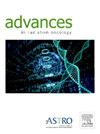线性加速器质量保证的改进失效模式及影响分析
IF 2.7
Q3 ONCOLOGY
引用次数: 0
摘要
失效模式与影响分析(FMEA)是一种评估失效模式及其后果的前瞻性方法。在放射治疗中,这种基于风险的方法可用于通知和推动质量保证(QA)计划,帮助确定质量保证(QA)的优先级,评估质量保证过程中任何变化的影响,并提高对潜在失效模式的认识。经典的FMEA可以为不同的发生、严重性和可检测性组合得出相同的风险优先级数(RPN)值。这里假设这3个值具有相同的重要性。在放射治疗中,高严重性的失效模式可能导致严重的临床后果,因此应优先考虑。方法和材料对彼得伯勒市医院的瓦里安TrueBeam直线加速器进行了经典的FMEA分析。这突出了高严重性失效模式在FMEA表中出现相对较低的问题,因为总体RPN值较低。因此,我们提出并实施了一种使用新的临床严重程度因子(S2)和混合RPN值的改进FMEA。结果没有一种失效模式会导致很高的RPN值。一些严重程度较高的失效模式,如门控系统波束保持、呼吸轨迹显示和备用计时器操作,总体RPN得分相对较低。新修改的FMEA通过将这些失效模式向上移动到FMEA表中来最小化这种影响。对于改进的FMEA,得分较高的失效模式都与与光束传输相关的机器参数有关,对于大多数患者使用的技术很重要。因此,提出的修正FMEA具有临床相关性。结论提出了一种新的修正FMEA,用于放射治疗中直线加速器的质量评价。建议使用这种方法来防止高严重性故障模式在FMEA表中出现较低的位置,从而被赋予较低的总体优先级。本文章由计算机程序翻译,如有差异,请以英文原文为准。
A Modified Failure Mode and Effects Analysis for Linear Accelerator Quality Assurance
Purpose
Failure mode and effects analysis (FMEA) is a proactive method for evaluating failure modes and the consequences of those failures. In radiation therapy, a risk-based approach such as this can be used to inform and drive the quality assurance (QA) program, help prioritize QA, evaluate the impact of any changes to the QA process, and raise awareness of the potential failure modes. A classical FMEA can result in identical risk priority number (RPN) values for different combinations of occurrence, severity, and detectability. This assumes that these 3 values hold the same significance. In radiation therapy, high-severity failure modes can lead to severe clinical consequences and so should be prioritized.
Methods and Materials
A classical FMEA was carried out for the Varian TrueBeam linear accelerator QA at Peterborough City Hospital. This highlighted the issue of high-severity failure modes appearing relatively low in the FMEA table because of low overall RPN values. Therefore, a modified FMEA using a new clinical severity factor (S2) with hybrid RPN values was proposed and performed.
Results
None of the failure modes resulted in very high RPN values. Some failure modes with high severities, such as gating system beam hold, breathing trace display, and backup timer operation, had relatively low overall RPN scores. The new modified FMEA minimized this effect by moving these failure modes up the FMEA table. For the modified FMEA, the higher scoring failure modes all relate to machine parameters associated with beam delivery and are important for techniques used for most patients. Therefore, the modified FMEA proposed gave clinically relevant results.
Conclusions
A new modified FMEA is proposed for linear accelerator QA in radiation therapy. This method is recommended to prevent high-severity failure modes from appearing low in the FMEA table and thus being given a low overall priority.
求助全文
通过发布文献求助,成功后即可免费获取论文全文。
去求助
来源期刊

Advances in Radiation Oncology
Medicine-Radiology, Nuclear Medicine and Imaging
CiteScore
4.60
自引率
4.30%
发文量
208
审稿时长
98 days
期刊介绍:
The purpose of Advances is to provide information for clinicians who use radiation therapy by publishing: Clinical trial reports and reanalyses. Basic science original reports. Manuscripts examining health services research, comparative and cost effectiveness research, and systematic reviews. Case reports documenting unusual problems and solutions. High quality multi and single institutional series, as well as other novel retrospective hypothesis generating series. Timely critical reviews on important topics in radiation oncology, such as side effects. Articles reporting the natural history of disease and patterns of failure, particularly as they relate to treatment volume delineation. Articles on safety and quality in radiation therapy. Essays on clinical experience. Articles on practice transformation in radiation oncology, in particular: Aspects of health policy that may impact the future practice of radiation oncology. How information technology, such as data analytics and systems innovations, will change radiation oncology practice. Articles on imaging as they relate to radiation therapy treatment.
 求助内容:
求助内容: 应助结果提醒方式:
应助结果提醒方式:


